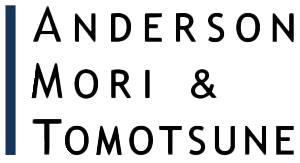Content
Since the outbreak of the COVID-19 pandemic in 2020, there have been rapid deregulations in connection with requirements to use wet-ink signatures/seals in Japan and we are seeing a rapid progress in digital transformation (DX). With the new invoice system scheduled to be implemented in October 2023, an increasing number of companies are using this opportunity to promote DX, including issuing digital invoices. On the other hand, there are some practical issues in connection with use of e-signatures. In this newsletter, we will discuss typical issues in implementing digital transformation in Japan.
I. DX of Contracts
1. Use of e-Signatures for e-Contracts
Following the Q&As concerning the Act on Electronic Signatures and Certification Business published by the Ministry of Justice after 2020, the legal environment surrounding the admissibility of evidence of e-contracts1 is now almost fully established. The procedures for managing risks associated with use of e-signatures for e-contracts is also being established2, and as a result, use of e-signatures for econtracts is progressing from the preliminary phase to the implementation phase. Regarding this point, the Japan Institute for Promotion of Digital Economy and Community (JIPDEC) published the 'Corporate IT Utilization Trends Survey 2023' on March 16, 2023, according to which the following progresses have been confirmed on the DX of contracts:
- Companies using e-signatures/e-contracts increased from 69.7% the previous year to 73.9% this year.
- When selecting e-contract service providers, almost half of the companies take into consideration whether the service provider has acquired the "Cloud Security Certification".
- 65.6% of the companies have "submitted" their registration applications for using the invoice system, and the percentage rises to 88.6% if companies "planning to submit" are included.
2. Challenges in Use of e-Signatures for e-Contracts
On the other hand, there are certain practical issues to be resolved in connection with use of esignatures for e-contracts, examples of which are listed below.
- Some Japanese companies tend to use a "group-e-mail address" which is (a) not assigned to a specific employee and (b) used by multiple employees of a company (e.g., employees in a legal division). Certain risk management actions may need to be taken if you allow use of a group-email address.
- In cases where the parties (Party A and Party B) to a two-party contract use different e-signature service providers (Provider X and Provider Y), whether there is compatibility between the esignature services used by the contract parties (i.e., whether Party A and Party B can use the service provided by Provider X and Provider Y, respectively, in executing an e-contract).
- Whether the admissibility of evidence of e-contracts data (e.g., PDF) differ between those that contain e-signatures in the form of a seal impression image (in'ei) and those that contain esignatures in the form of a signature image.
- The extent to which the safety of electronic data (e.g., PDF) that contains e-signatures should be ensured through timestamps or long-term electronic signature services.
- How to deal with cases where one party wishes to execute the contract in paper form and by affixing a seal, and the other party by e-signatures.
- How to deal with cyberattack risks and other risks that have increased in recent years.
- Whether DX is possible in certain types of contracts that are required to be prepared in the form of a "notarized document".
II. DX in Corporate Law
1. DX of Shareholders' Meeting
Due to the amendment to the Act on Strengthening Industrial Competitiveness on June 16, 2021, certain listed companies that satisfy certain requirements are now able to hold online shareholders meetings only. It is crucial to verify each shareholder at online shareholders' meetings. Examples of such verification of each shareholder includes the following:
- To verify each shareholder who attends an online shareholders' meeting via internet by checking a password and ID which is sent to each shareholder by mail; or
- To verify each shareholder who attends an online shareholders' meeting via telephone by checking a passcode which is sent to each shareholder by mail
In promoting DX, identity verification is a key aspect to mitigate impersonation risks. Possible methods for verification include the use of two-factor authentication (niyouso-ninshou) or verification by using My Number Card for shareholders holding more than a certain number of voting rights.
2. DX of Meeting of Board of Directors Meeting
In promoting DX for the minutes of the board of directors meeting, the following points should be considered:
- The minutes of the board of directors meeting can be prepared either in a paper form or in a digital form.
- If the minutes of the board of directors meeting are prepared in digital form, each attending officer is required to affix an "e-signature" instead of signing or affixing their name and seal ("kimei-ouin").
- A company needs to carefully check which type of e-signature can be used for the minutes of the board of directors depending on various factors, e.g., (a) whether such minutes will be used for company registration procedures (please see III.1 below) and (b) which person (e.g., a representative director or a director) will affix e-signature to such minutes.
III. DX of Governmental and Judicial Procedures
1. DX of Governmental Procedures
(1) DX of registration procedures
Please refer to the current status of DX with respect to commercial registration procedures and real estate registration procedures set out below.
- DX of commercial registration procedures
- Simple e-signatures can be used in connection with documents which do not need to be executed by affixing an official registered seal if it is submitted in a paper form.
- Advanced e-signatures or digital e-signatures must be used in connection with documents which need to be executed by affixing an official registered seal if it is submitted in a paper form.
- DX of real estate registration procedures
- Advanced e-signatures or digital e-signatures must be used.
(2) Other governmental procedures
- With respect to the DX of general governmental procedures, the usability of the e-Government (e-Gov) system has improved since its renewal in 2020. However, it should be noted that certain governmental procedures require use of advanced/digital e-signatures.
- Referenced court case It is reported that, in a judgement issued by Tokyo District Court in December 2022, Tokyo District Court did not allow a request for a copy of a residential certificate in Japan (juminhyou) via LINE services. It raises an issue on how much verification should be implemented in different types of governmental procedures.
2. DX of Judicial Proceedings
(1) DX of civil litigation proceedings
The Act partially amending the Code of Civil Procedures was enacted in May 2022 to implement DX of civil litigation proceedings. The progression status of DX of civil litigation proceedings is as follows:
- Although "mints" (Minji Saiban-shorui Denshi Teishutsu Service) is in operation, documents that can be submitted online are currently restricted to documents such as briefs, copies of documentary evidences, explanation of evidences that are admissible to submission via facsimile under Article 3, Paragraph 1 of the Enforcement Regulation for the Code of Civil Procedure.
- In future, it is expected that wider range of documents can be submitted online and discussion related to admissibility as evidence of digital documents (e.g., e-contracts) will be progressed.
(2) DX of civil executions
It is planned that DX in the civil execution procedures will be implemented.
IV. DX in Accounting and Tax
1. DX in Accounting Work
With the so-called "invoice system" scheduled to be implemented in October 2023, the number of companies taking this opportunity to implement DX in accounting procedures (e.g., issuing a digital invoice). The following points should be considered in implementing DX of accounting work.
- While the invoice system does not necessarily require use of digital invoices, it is possible to implement digital invoices in order to improve efficiency. Japanese companies tend to maximize this opportunity to implement DX in accounting work.
- Ideally, companies that are able to use digital invoices should issue digital invoices using a format that satisfies the requirements set out in the Electronic Books Preservation Act (denshichoubo-hozonhou) explained in 2 below. In addition, in terms of reinforcing compatibility, it is desirable to use a format that is expected to be used by many companies both within and outside Japan (e.g., digital invoice by using Peppol).
- Paper invoices tend to be issued by affixing company seals in a square form (kaku-in) in order to mitigate risks such as (a) an invoice is issued by a person who is pretending to be an authorized person (i.e., impersonation risk) and/or (b) an invoice is issued by a person who is not authorized to do so within a company (i.e., no authorization risk). Each company will need to analyze how to manage such risks in dealing with digital invoices.
2. DX in Tax Work
In promoting the DX in tax work, it is necessary to satisfy the requirements set out in the Act on Special Provisions concerning Preservation Methods for Books and Documents Related to National Tax Prepared by Means of Computers (the "Electronic Books Preservation Act"). The following points should be considered:
- Use of e-signatures/e-contracts have been increasing since 2020. Although there are certain exemptions available which allow companies to keep such e-contracts in a paper form (i.e., a printed version), such exemptions may end at the end of 2023.
- Companies will need to establish their work-flow which satisfy specific requirements under the Electronic Books Preservation Act.
V. Future Prospects
Japanese government plans to abolish conventional paper/stamp requirements by June 2025 in various sectors. Progress of such deregulations should be carefully watched since such deregulations may create new businesses
Footnotes
1. In this newsletter, "e-contracts" means "contracts that are executed via digital means such as by using e-signatures".
2. For more detail, please refer to 1 (1) of the newsletter in the link below: https://www.amt-law.com/asset/pdf/bulletins14_pdf/EN_210913.pdf
The content of this article is intended to provide a general guide to the subject matter. Specialist advice should be sought about your specific circumstances.




